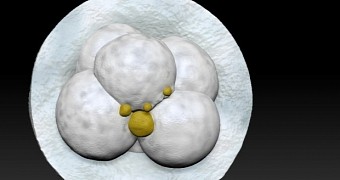In vitro fertilization leads to the birth of around 5 million babies each year, which is a significant number considering that the practice started out only in 1978. Now, though, there is reason to think it will happen even more often.
Professor Samir Hamamah and Dr. Elodie Scalici of the University Hospital of Montepellier and Dr. Mérigeaud of Tridilogy, LLC, have developed a certain technique.
This technique allows doctors to analyze a 3D embryo as a whole, then create an image of that embryo and use it in 3D printing.
This essentially allows anyone to examine embryos, instead of the practice being limited to single-plane examination. It should let people figure out why 8% of all embryos fertilized in vitro still fail to implant.
How the process works
Normally, during in vitro fertilization, a woman's eggs are removed from the ovaries and fertilized in a laboratory. Not a quick and emotionally easy process, to say the least.
It doesn't help that the woman needs to be injected, daily, with a compound that suppresses her monthly hormone cycle. Or that a daily fertility hormone injection is applied as well, to increase the number of eggs produced.
The eggs are mixed with seed in a laboratory, which is the point where they become embryos, since they have been fertilized.
The better prepared the woman is, the more likely the process is to succeed. However, there's still a chance that fertilization will fail even after all the safeguards, which would waste all those twelve thousand dollars/euro paid for the process.
The new technology invented by the people we mentioned before created a 3D model based on standard inverted light microscopy. The resulting 3D print of the embryo should give extra perspective to the doctors carrying out the IVF procedure, hopefully reducing the implant failure rate to a negligible level.
Conclusion and prospects
All in all, we can definitely say that IVF has come a truly long way in the past three and a half decades. No doubt various hospitals, at least those with maternity wards, and maybe private doctor offices, will start to use this method, the same way 3D printed bone implants and surgery planners are catching on.
Now we just have to wonder how long it will take before 3D printing technology is good enough to print actual embryos.
Hopefully it never happens, since that would be all kinds of weird and disturbing. It's bad enough that we eat so much synthetic food, we don't need to become synthetic ourselves.

 14 DAY TRIAL //
14 DAY TRIAL //